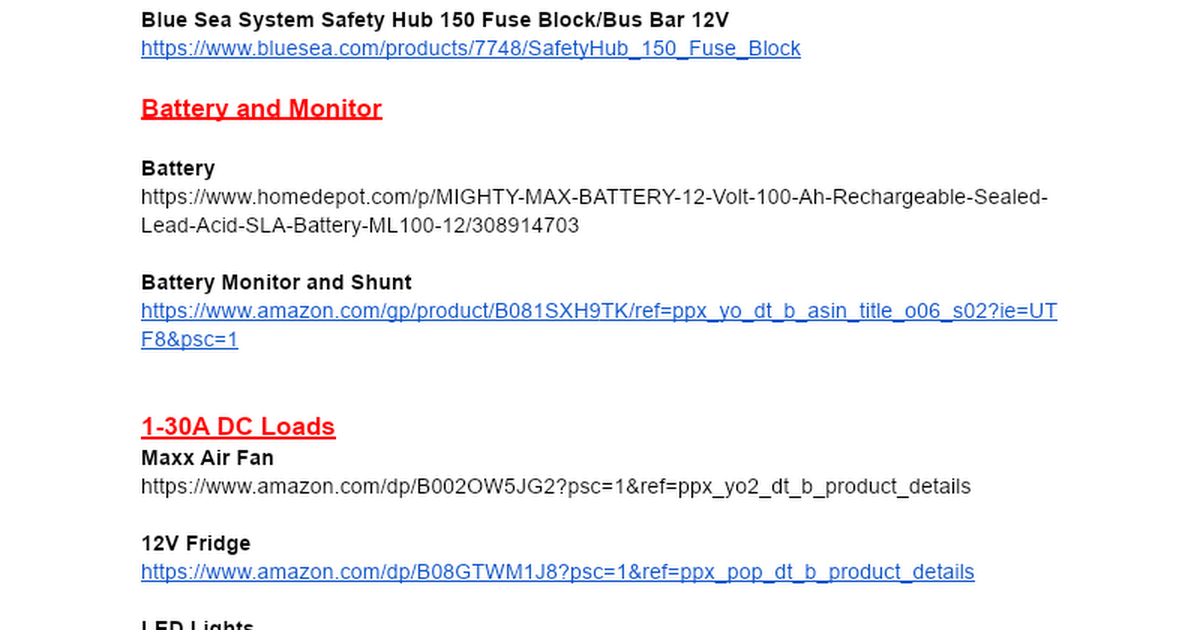maletomango
New Member
- Joined
- Aug 27, 2021
- Messages
- 6
Hello,
I have no experience with solar or electric at all. I just completed my wiring diagram (link below) for my van and I would greatly appreciate any feedback and recommendations. The battery, solar panels, and alternator isolator all came with the van when I purchased it, so I sort of planned around those.
The fuse and wiring for the battery are sized so that I can upgrade to a 200AH AGM deep cycle battery in the future if/when I need to.
A note on the Fridge- the manufacturer states that it uses 250W per 24 hrs and it is rated at 60W. A review states that on hot days it can consume a max of 25-30A (300-360W) per 24 hrs.
Power Audit: 600W usable battery capacity
(High estimations)
Fridge: 360W
Lights: 20W
Roof Fan: 100W
Computer Fan: 24W
Laptop: 100W
Phone: 10W
=524W
Wiring Diagram
https://docs.google.com/drawings/d/1RYJO1x1fIQf-m7oi0D9RJLwWDaHvReq0W2P31__D8iA/edit?usp=sharing
Parts List

 docs.google.com
docs.google.com
I have no experience with solar or electric at all. I just completed my wiring diagram (link below) for my van and I would greatly appreciate any feedback and recommendations. The battery, solar panels, and alternator isolator all came with the van when I purchased it, so I sort of planned around those.
The fuse and wiring for the battery are sized so that I can upgrade to a 200AH AGM deep cycle battery in the future if/when I need to.
A note on the Fridge- the manufacturer states that it uses 250W per 24 hrs and it is rated at 60W. A review states that on hot days it can consume a max of 25-30A (300-360W) per 24 hrs.
Power Audit: 600W usable battery capacity
(High estimations)
Fridge: 360W
Lights: 20W
Roof Fan: 100W
Computer Fan: 24W
Laptop: 100W
Phone: 10W
=524W
Wiring Diagram
https://docs.google.com/drawings/d/1RYJO1x1fIQf-m7oi0D9RJLwWDaHvReq0W2P31__D8iA/edit?usp=sharing
Parts List



